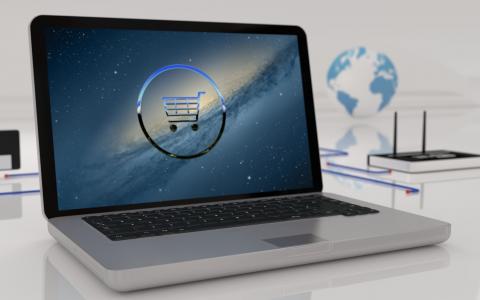
(Protocol) - Off the chain
I remember the original pitch for PayPal: It was going to change the world of money. Many inside the company thought they sold out too cheaply to eBay for $1.5 billion nearly 20 years ago. Sure enough: In July, driven by pandemic gains in ecommerce, PayPal was worth a staggering 200 times that. It’s fallen from those heights, like many tech growth stocks; even where it’s trading now, it’s an amazing feat of value creation. But now PayPal is so big that the world is changing it, rather than the other way around, as Tomio Geron writes. Read on to learn why. — Owen Thomas
Hey, big spender
PayPal investors rewound the clock in late trading Thursday, slashing $37 billion off the company’s valuation and wiping out two years of pandemic-driven gains. The proximate cause was the payments giant’s earnings, which just missed analysts’ expectations. But its guidance also spoke to harder times ahead.
So now the company is looking to court higher-value customers to boost growth (which, to be fair, is still going gangbusters — the company expects to process $1.5 trillion in payments this year, up from $1.25 trillion in 2021). But it’s a sign of the macroeconomic changes that have hit PayPal’s bottom line, along with the broader ecommerce market.
As goes the economy, so go payments. PayPal’s business has expanded to include payments for a wide range of goods and services. That’s the good news. The bad news is that it’s now so broad that the wider economy has a big impact on its business.
- A combination of macroeconomic factors combined to depress the company’s earnings, especially toward the end of the fourth quarter, including supply chain problems, which affected cross-border volumes and small businesses; inflation, which hurt spending; and the omicron variant, which hurt travel and event bookings. That caused the company to issue conservative guidance.
- But PayPal expects some of these macro factors to ease in the second half of the year. That could mean good news for the ecommerce market generally.
- In addition, after June, PayPal will free itself from the shadow of eBay. It won’t have to compare its results to a time when it still handled its former parent’s transactions. (As part of its 2015 split, eBay now handles its own payments.) PayPal pointed out that its revenue growth excluding eBay increased more than 6 percentage points to 29% in 2021.
PayPal is writing a new post-pandemic playbook. The global crisis brought a windfall for PayPal as consumers stuck at home clicked “buy.” But that’s not going to last.
- So PayPal said it is pivoting its business to focus on more highly engaged, higher-paying customers. It’s a sensible but striking move by the company, which previously aimed for ubiquity.
- PayPal saw 122 million net new active accounts over the past two years — a big jump as more consumers bought online. But many of those customers did not spend much, so the company has decided to spend less marketing money on those users. PayPal’s not a subscription business where adding more users means more revenue, said CFO John Rainey.
- Instead, it’s going to focus on those more active users. About a third of its customers make up “the vast majority” of its volume, Rainey said. When PayPal adds a new product for these existing customers, it sees revenue increase. “We need to pivot to evolve,” Rainey said.
- PayPal now expects that net new active number to drop back to pre-pandemic levels of 30 to 40 million per year, though international growth could bolster it. “It just means that we're not going to throw marketing dollars at low-value [customers] coming in,” said CEO Dan Schulman.
There’s life beyond the “buy” button. While it’s most known for its PayPal checkout button, the company has other growth drivers.
- Venmo volume increased 29% to $61 billion in the fourth quarter and 44% to $230 billion for the full year. The company expects some of its PayPal super app features to come to Venmo.
- Speaking of PayPal’s super app, the company sees a slew of cross-selling opportunities, including generating leads for merchants through offers, “buy now, pay later,” crypto buying, savings accounts and bill pay.
- Customers who use PayPal’s digital wallet and “buy now, pay later” provide twice the average revenue of those who only use PayPal checkout.
PayPal still relies on basic payments for the bulk of its business, so it needs to develop new products and features to compete with the Blocks and Affirms of the world. More than two decades old, it sometimes struggles to persuade tech-savvy customers that it’s still cutting-edge. But with the economy weighing on it, PayPal must go where the money is.
By Tomio Geron
and the Fintech team
February 2, 2022



